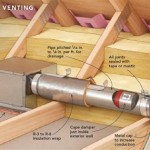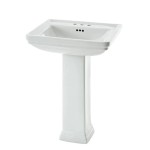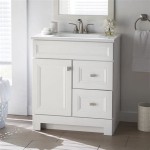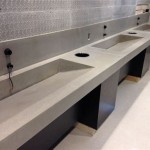Can You Retile a Bathroom Without Replacing the Suite?
Renovating a bathroom can be a significant undertaking, often involving complex decisions about budget and design. One common question homeowners face is whether they need to replace the entire bathroom suite (toilet, sink, bathtub/shower) when retiling. The answer, in most cases, is no. Retiling without suite replacement is entirely possible and often a more cost-effective approach, provided certain precautions are taken.
The key to successfully retiling without replacing the suite lies in careful planning and execution. The existing fixtures must be protected throughout the process to avoid damage from falling debris, tile adhesive, or grout. Additionally, the tiling must be executed in a manner that allows the existing fixtures to integrate seamlessly with the new tile layout.
Before commencing any work, it's essential to assess the condition of the existing suite. If the suite is already outdated or damaged, replacing it alongside the retiling project may be a more sensible long-term solution. However, if the suite is in good condition and fits the desired aesthetic, retiling around it is a viable option.
Protecting the existing fixtures is paramount. This involves covering them with heavy-duty protective sheeting, such as thick plastic drop cloths or purpose-made fixture covers. The sheeting should be securely taped in place to prevent dust and debris from infiltrating underneath and scratching the surfaces. Particular attention should be paid to sealing around the bases of toilets and sinks.
When removing the old tiles, extreme care must be taken around the edges of the fixtures. A sharp chisel and hammer might be necessary for removing tiles directly adjacent to the suite, but this should be done with precision to avoid chipping the porcelain or enamel of the fixtures. Using a grout removal tool beforehand can help loosen the tiles and minimize the risk of damage.
The choice of new tiles can influence the ease of integration with the existing suite. Tiles with a similar thickness to the old tiles will often result in a smoother transition. If significantly thicker tiles are chosen, adjustments might need to be made, such as adding extra layers of adhesive or using trim pieces to create a neat finish. Similarly, the color and pattern of the new tiles should complement the existing suite to maintain a cohesive design.
Tiling around the fixtures requires accurate measuring and cutting. It's advisable to create cardboard templates of the areas surrounding the fixtures. These templates can be used to mark the tiles for cutting, ensuring a precise fit. Using a tile cutter or wet saw will yield cleaner cuts than a tile nipper, particularly for complex shapes.
Applying the tile adhesive requires attention to detail. Ensure a consistent layer of adhesive is applied to the wall to prevent the tiles from shifting or cracking. Around the fixtures, the adhesive should be applied neatly to avoid squeezing out onto the fixtures themselves. Any excess adhesive should be cleaned immediately to prevent it from hardening and becoming difficult to remove.
Grouting is the final stage of the tiling process. A flexible, waterproof grout is recommended for bathrooms to accommodate any movement and prevent water damage. Apply the grout carefully, ensuring all joints are completely filled. Excess grout should be removed from the tile surface and around the fixtures with a damp sponge before it dries completely. Silicone sealant should be used at the junction between the tiles and the fixtures to create a waterproof seal and prevent water ingress.
While retiling without replacing the suite can be a cost-effective solution, it does require a higher degree of precision and care compared to a full bathroom renovation. If unsure about any aspect of the process, consulting a professional tiler is highly recommended. Their expertise can ensure the project is completed to a high standard and minimize the risk of damaging the existing bathroom suite.
Choosing the right tools for the job is also crucial. Invest in quality tile cutters, grout floats, and other tiling tools. These tools will not only make the job easier but also contribute to a more professional finish. Furthermore, researching different tiling techniques and watching instructional videos can provide valuable insights and improve the overall outcome of the project.
Careful consideration should also be given to the layout of the new tiles. Planning the tile arrangement around the existing fixtures beforehand can help avoid awkward cuts and ensure a balanced and aesthetically pleasing result. This may involve adjusting the starting point of the tiling or incorporating decorative borders or patterns to integrate the fixtures seamlessly.

How To Renovate Bathroom Without Removing Tiles Multipanel

How To Upgrade Bathroom Tile Without Replacing

Hallway Bathroom To En Suite Retreat A Diy Renovation The Created Home

How To Cover Wall Tile Without Removing Them In Bathrooms

How To Revive Bathroom Tiles Without Replacing Them Showers You

Bathroom Remodeling A Step By Guide Budget Dumpster

The Easy Way To Update Bathroom Tile Without Replacing It

Bathroom Expansion Finding Space When Remodeling A Master Suite Toulmin Kitchen Bath Custom Cabinets Kitchens And Design In Tuscaloosa Birmingham Alabama

How To Upgrade Bathroom Tile Without Replacing

How To Upgrade Bathroom Tile Without Replacing
Related Posts







